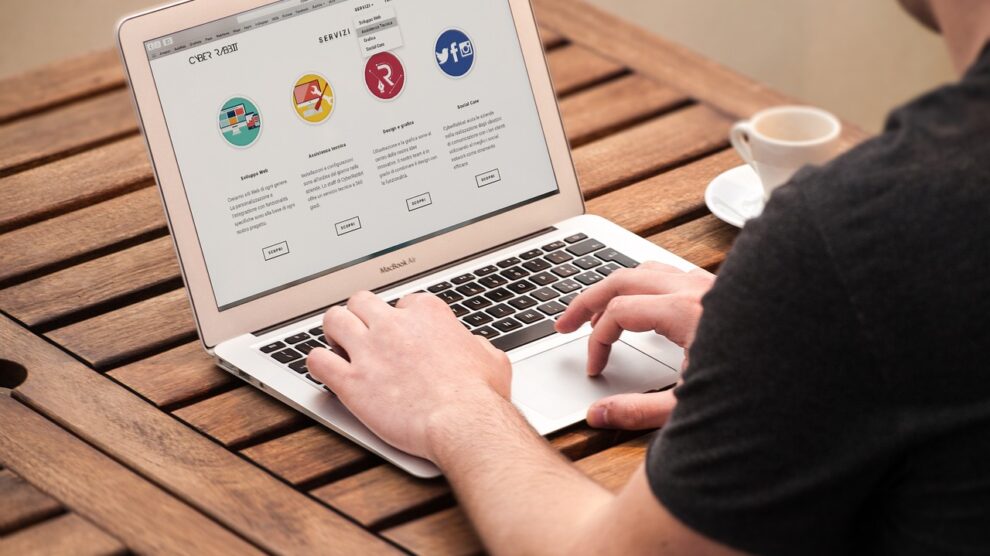Think about award winning web design agency as you would the creation of a playground. Even the smallest details can enhance playtime. It’s not just about how it appears; it’s also about making it enjoyable for everyone. Micro-interactions have a role in this. They’re like little surprises on a website, like animations or interactive buttons. They may be minor, but they may make using a website more enjoyable.
Let’s go on a micro-interaction adventure! Assume we are treasure hunters. We’ll discover why these small details matter, look at some great examples, listen to experts, learn about the tools, and explore how these small details can make websites even more enjoyable to use.
Understanding Micro-interactions
Micro-interactions are little, subtle animations or replies that occur when a user interacts with a website or programme. They give feedback, help users through a procedure, or simply add a sense of delight to the overall experience. Micro-interactions are ubiquitous, from clicking a button to liking a post, and they are vital in increasing user engagement.
Why Do Micro-interactions Matter?
So, you know how when you’re playing a game, even the smallest move may affect everything? Websites are similar in this regard. Micro-interactions are small things that can have a tremendous impact. But why should we care about such trivial matters? Let’s have a look:
Do you know how signs may assist you find your way around a major city? On websites, micro-interactions do this. They’re like small arrows indicating where to click or tap. When you move your mouse over a button and it changes, that is a micro-interaction telling you, “Hey, you can click here!”
Have you ever tried pushing a door that wouldn’t open? Micro-interactions prevent this from happening on websites. They’re like the magic touch that causes buttons to do stuff when you click them. So, when you tap a button and it does something wonderful, there’s a micro-interaction that causes things to happen.
Do you know how your friend nods when you talk? Micro-interactions do something similar. They give you a quick response when you do something on a website. Like, if you send a message and a little animation appears, it’s like the website saying, “Got it, message sent!”
Remember following a map to find a treasure? Micro-interactions are like maps for websites. They can show you where to type your name or where to click next. These tiny guides help you know what to do, even if the website is new to you.
Sometimes websites need to tell you things, like if you type the wrong password. Micro-interactions do this in a friendly way. If you mess up, they might wiggle the screen or show a message in red – it’s like the website saying, “Oops, something’s not right.”
Remember how it feels to get a surprise gift? Micro-interactions can make websites feel like that. They add fun things when you click, making it more exciting. Like when you click a heart and it does a cute animation – it’s a small thing that makes you smile.
Imagine a spotlight on a stage – it shows you where to look. Micro-interactions do the same by guiding your eyes to important stuff on a website. They might make a button move or change colour to catch your attention and say, “Look here!”
Think of your favourite toy and how it makes you happy. Micro-interactions do this on websites. They can make you feel excited or proud. For example, when a website gives you a thumbs-up after you finish something, it’s like a tiny celebration.
Micro-interactions might be small, but they’re like the secret ingredients that make websites amazing. So, next time you see buttons changing, animations popping up, or messages guiding you, remember that these small heroes are making your online experience super cool!
Examples of Effective Micro-interactions
Let’s dive into some real-world examples of micro-interactions that illustrate their impact on user experience:
1. Facebook’s Like Button
The iconic thumbs-up animation that appears when you like a post on Facebook is a prime example of a micro-interaction. It provides instant feedback and adds a touch of satisfaction to the action.
2. Loading Animations
Loading animations, such as spinners or progress bars, keep users informed that their request is being processed, preventing frustration during waiting periods.
3. Hover Effects
Buttons changing colour or size when hovered over provide subtle visual feedback, indicating that they are interactive elements.
4. Form Validation
When users fill out a form, instant validation feedback (like a green checkmark for correct input or a red warning for errors) helps users correct mistakes before submission.
5. Animated Navigation
Navigation menus that smoothly transform into a mobile-friendly icon or slide out from the side enhance user experience during responsive design transitions.
Breaking It Down: The Anatomy of Micro-interactions
Micro-interactions are composed of four essential components:
1. Triggers
Triggers initiate a micro-interaction, and they can be categorized as user-initiated or system-initiated.
- User-Initiated Triggers: These require users to initiate an action, such as clicking a button or swiping a screen.
- System-Initiated Triggers: These are initiated automatically when the software detects specific conditions being met. For instance, receiving a notification when a message arrives.
Triggers are the catalysts that set micro-interactions in motion, creating a bridge between user intent and system response.
2. Rules
Rules dictate the behaviour of a micro-interaction once triggered. They define what happens, how it happens, and when it happens. Rules determine the sequence of events that unfold during a micro-interaction. They orchestrate the animation, timing, and overall flow, ensuring a coherent and delightful user experience.
3. Feedback
Feedback is the response users receive during a micro-interaction. It encompasses visual cues, sounds, and haptic feedback that provide real-time information about the progress or outcome of the action. Feedback creates a tangible connection between user action and system response. It reassures users, communicates progress, and empowers them with a sense of agency over their interactions.
4. Loops and Modes
Loops and modes govern the overall behaviour of a micro-interaction. They determine how the interaction adapts when conditions change, ensuring a seamless experience as users navigate different scenarios. Loops and modes add a layer of adaptability to micro-interactions. They allow interactions to remain relevant and engaging regardless of the context, ensuring a consistent and satisfying user experience.
Tools to Design Micro-interactions!
Designing micro-interactions requires a toolkit that empowers your creativity. Here are some indispensable tools:
1. Framer
Framer empowers you to create interactive and animated prototypes with precision. Its intuitive interface lets you design and prototype micro-interactions seamlessly, making it a favourite among designers.
2. Principle
The principle is designed specifically for animation and interaction design. It allows you to create fluid and interactive animations, making it an excellent choice for crafting micro-interactions.
3. Adobe XD
Adobe XD offers a comprehensive platform for UX and UI design. Its interactive features enable you to create and test micro-interactions directly within your design, streamlining the process.
4. InVision Studio
InVision Studio merges design and animation capabilities, enabling you to create dynamic and engaging micro-interactions. Its collaborative features facilitate team collaboration and feedback.
5. Sketch
Sketch is a versatile tool for UI design, and its animation plugins make it suitable for creating micro-interactions. With its robust ecosystem, you can customize your workflow to meet specific needs.
6. Origami Studio
Origami Studio, created by Facebook, is a powerful tool for designing interactive interfaces and micro-interactions. It’s especially useful for designing interfaces with complex animations.
7. Marvel
Marvel is an intuitive platform for turning design files into interactive prototypes. It enables you to create micro-interactions without the need for extensive coding.
Blueprint for Seamless Micro-interaction Integration
Executing micro-interactions requires a nuanced approach. Here’s a blueprint to aid you:
- Purpose-Driven Design: Each micro-interaction should serve a distinct purpose – whether it’s delivering feedback, enhancing navigation, or instilling delight. Refrain from incorporating animations for the mere sake of ornamentation.
- Subtle yet Impactful: The allure of micro-interactions lies in their subtlety. They should enrich the user experience without overshadowing the primary content.
- Consistency and Cohesion: Adhere to uniformity in design elements, including animation style, timing, and auditory cues. This fosters a cohesive user journey that feels holistic.
- Feedback Finesse: Micro-interactions must be designed with clarity in mind. Users should effortlessly decipher the outcome of their actions, ensuring a seamless interactive flow.
- User Empowerment: Provide users with the ability to customize or disable certain animations. What might delight one user could distract another, and offering this option ensures inclusivity.
- Performance Prudence: Striking a balance between aesthetics and performance is critical. Overloading a page with excessive animations can inadvertently impair loading times and user experience.
Conclusion
Incorporating micro-interactions into web design goes beyond aesthetics; it’s about creating a dynamic, engaging, and intuitive user experience. These small details, when skillfully integrated, can lead to a more enjoyable and memorable interaction, ultimately boosting user satisfaction and encouraging them to spend more time on your website. By following the tips and examples outlined in this article, you can begin to harness the power of micro-interactions and take your web design to the next level. Remember, it’s the little things that often make the biggest impact.





